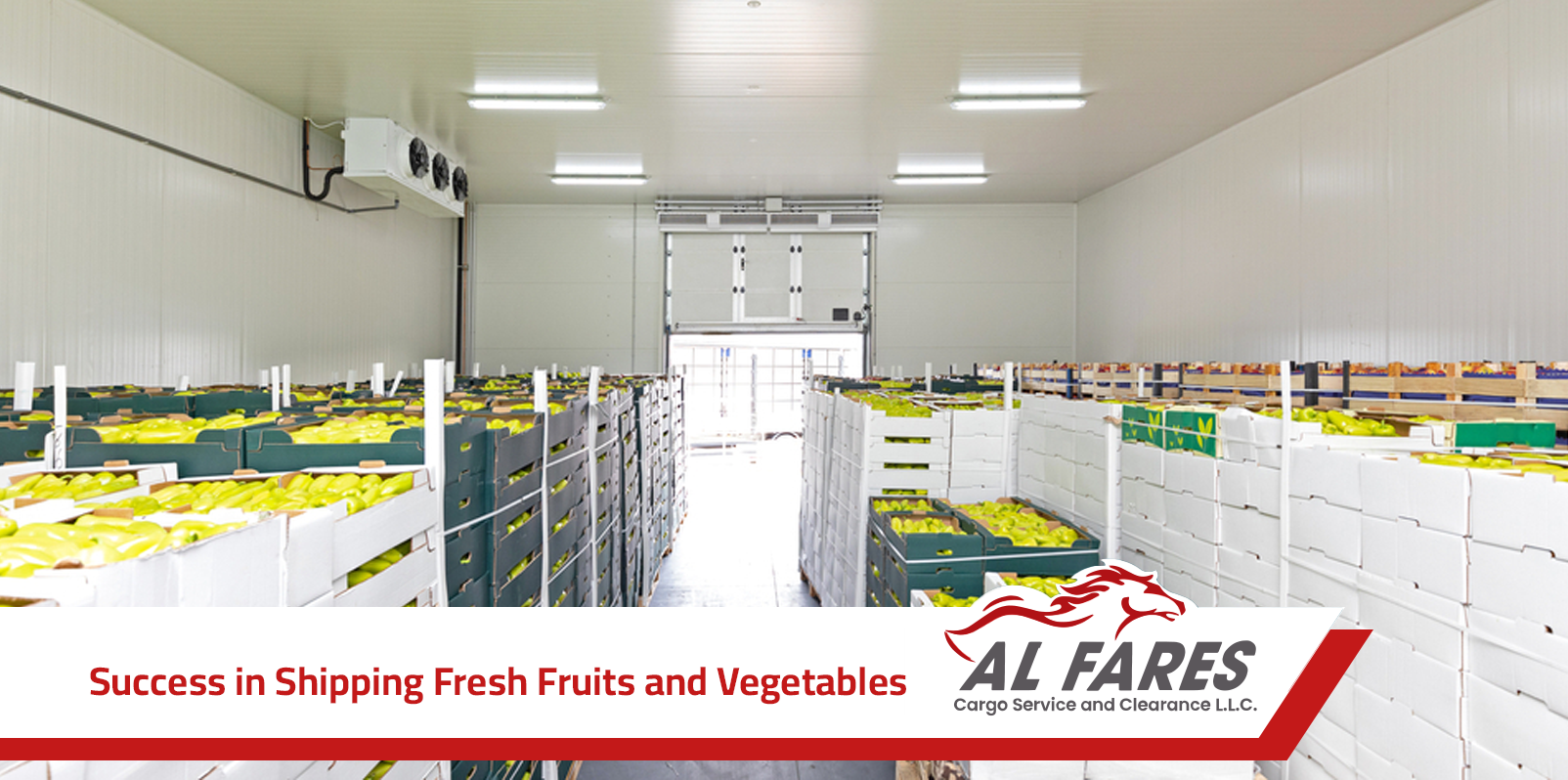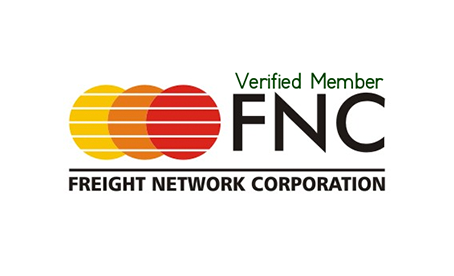Succeeding in the shipment of fresh fruits and vegetables is a challenging yet rewarding endeavor. This meticulous process requires a set of integrated procedures and strategies to ensure the quality of the products and meet consumer expectations. In this introduction, we will explore the key secrets and successful practices in the field of shipping fresh fruits and vegetables.
Maintaining an impeccable cold chain throughout the shipping process is essential, as is the proper organization of packaging, which is crucial for preserving the safety of fruits and vegetables. Additionally, precise planning of shipping routes and schedules is of utmost importance.
By focusing on these critical aspects, shipping companies operating in the fresh fruits and vegetables sector can achieve the desired success and provide an exceptional consumer experience. In the following sections of this article, we will delve into these essential elements of successful shipping in detail.
The Importance of Shipping Fresh Fruits and Vegetables
Shipping fresh fruits and vegetables is of great importance for several reasons.
First, maintaining the quality and freshness of the products is crucial. When the shipping process is done correctly, fruits and vegetables retain their natural properties and reach the consumer in a fresh and ideal state. This ensures a positive and satisfying consumer experience.
Second, shipping fresh fruits and vegetables helps preserve their nutritional value. These fresh products contain high levels of essential nutrients such as vitamins, minerals, and fiber. When shipped properly, their high nutritional value is maintained and delivered to consumers.
Third, the shipping process allows consumers in distant areas to access fresh products outside their local seasons. This enhances dietary diversity and enables people to enjoy fresh fruits and vegetables year-round, regardless of their geographic location.
Fourth, shipping fresh fruits and vegetables supports local agricultural production and the local economy as a whole. The demand for these products enhances the livelihoods of farmers and contributes to the development of the local economy in producing areas.
Finally, shipping fresh fruits and vegetables in efficient and environmentally friendly ways helps sustain the environment. Relying on local sources and sustainable transportation methods reduces the environmental footprint of this process.
Secrets to Success in Shipping Fresh Fruits and Vegetables:
1-Rapid and Proper Cooling
Rapid Cooling:
- Importance: After harvesting, fruits and vegetables should be cooled as quickly as possible to prevent the onset of spoilage and decay.
- Techniques: This can be achieved using methods such as forced-air cooling or hydro-cooling. These techniques rapidly reduce the temperature to the desired level.
- Benefits: Rapid cooling limits the growth of bacteria and fungi and slows down the natural respiration and degradation processes of the products.
Proper Cooling:
- Temperature Maintenance: After rapid cooling, it's crucial to maintain the appropriate temperature throughout the shipping journey.
- Equipment: This involves using proper refrigeration equipment such as refrigerators and refrigerated containers.
- Optimal Temperatures: The ideal temperatures vary depending on the type of fruit or vegetable but are generally between 0-5 degrees Celsius.
- Quality Preservation: Maintaining these temperatures slows down ripening and spoilage processes, ensuring the products' quality is preserved.
Additional Requirements:
- Avoiding Direct Exposure: Prevent direct exposure to cold air during shipping to avoid surface freezing of the products.
- Ventilation: Ensure adequate ventilation inside the packaging to facilitate the cooling process.
- Monitoring: Continuously monitor temperatures and humidity levels during the shipping journey to ensure optimal conditions are maintained.
2-Maintaining the Cold Chain
What is the Cold Chain?
- Definition: The cold chain refers to maintaining a low temperature for fresh products throughout the entire shipping and distribution journey.
- Process: This includes from the moment of harvest, through packing and temporary storage, during shipping and transportation, and until the product reaches the final consumer.
Importance of Maintaining the Cold Chain:
- Quality Preservation: Ensures the quality of the products and extends their shelf life.
- Waste Reduction: Reduces the rates of waste and spoilage due to premature ripening or decay.
- Food Safety: Maintains food safety and minimizes the risk of harmful bacterial growth.
- Market Standards: Ensures compliance with required market standards and specifications.
Requirements for Maintaining the Cold Chain:
- Proper Equipment: Use appropriate refrigeration equipment at every stage of the shipping process.
- Continuous Monitoring: Constantly monitor and record temperatures.
- Efficient Transfer: Ensure quick transfer of products from one stage to another without delays.
- Sanitation: Maintain cleanliness and sanitation of transport and storage facilities.
- Training: Train workers on cold chain safety practices.
Challenges and Risks:
- Power Outages: Power failures or breakdowns in refrigeration equipment.
- Adverse Weather: Poor weather conditions during shipping.
- Delays: Delays in shipping and transportation processes.
3-Utilizing Temperature and Humidity Control Technology
Refrigeration and Freezing Technology:
- Refrigerated Containers: Use refrigerated containers and shipping equipment to maintain the appropriate temperature.
- Advanced Cooling Techniques: Implement advanced cooling techniques such as forced-air cooling or evaporative cooling.
- Precise Monitoring: Continuously monitor and control temperatures during the transportation process.
Humidity Control:
- Humidity Regulation Systems: Use humidity control systems in shipping containers.
- Temperature and Humidity Coordination: Adjust temperature and humidity levels suitable for each type of product.
- Humidity Adjustment Techniques: Apply techniques to remove excess humidity or add moisture when necessary.
Supporting Technology:
- Sensors and Measurement Devices: Utilize sensors and measuring devices to monitor temperature and humidity.
- Electronic Information Systems: Implement electronic information systems for data recording and analysis.
- GPS Tracking: Integrate GPS technology to monitor transportation conditions.
4-Appropriate Packaging
Importance of Proper Packaging:
- Temperature Maintenance: Helps maintain the low temperature of the products.
- Protection: Protects products from physical damage during shipping and transport.
- Quality and Shelf Life: Preserves the quality of the products and extends their shelf life.
- Handling and Distribution: Facilitates handling and distribution processes.
- Market Requirements: Ensures compliance with market and branding requirements.
Suitable Packaging Techniques:
- Insulating Materials: Use containers and boxes made of insulating materials such as polystyrene.
- Plastic Bags and Covers: Utilize transparent plastic bags and covers to keep products cool.
- Insulating Layers and Nitrogen Bags: Wrap products in insulating layers or bags filled with nitrogen.
- Effective Cooling Systems: Implement efficient cooling systems inside the packages.
- Cooling Packs: Place cooling packs or dry ice between layers of products.
Other Considerations:
- Proper Sizing: Ensure the packaging size is appropriate for the shipment volume.
- Warning Labels: Use labels and warning tags to maintain the required temperature.
- Product Arrangement: Plan the arrangement and distribution of products inside the packages effectively.
5- Scheduling and Timing:
Precise Scheduling Planning:
- Harvest and Loading Times: Determine appropriate harvest and loading times to ensure timely arrival.
- Shipping Duration: Carefully consider expected shipping durations based on the transportation method used.
- Coordination with Recipient: Coordinate with the recipient to adhere to delivery schedules.
Timing Considerations:
- Avoiding Delays: Avoid delays in shipping and delivery to minimize exposure to inappropriate temperatures.
- Shipping Schedule Coordination: Align shipping times to avoid downtime and closures in warehouses and ports.
- Expediting Processes: Plan to expedite harvesting, loading, and unloading processes as much as possible.
Continuous Coordination and Follow-up:
- Regular Communication: Maintain regular communication with suppliers and land and sea transport providers for follow-up.
- Checkpoints: Establish checkpoints and inspections during the transportation process.
- Schedule Adjustments: Be prepared to make schedule adjustments when necessary.
6- Pre-Shipment Inspection
Quality and Ripeness Check:
- Appearance: Verify the appearance of vegetables and fruits (color, shape, ripeness).
- Hardness and Moisture: Test the hardness and moisture content.
- Damage-Free: Ensure the products are free from any damage or deformities.
Packaging Evaluation:
- Integrity and Suitability: Check the integrity of the packaging and its suitability for the product characteristics.
- Appropriate Materials: Ensure the use of appropriate packaging materials to maintain quality.
- Labels and Identification: Verify the presence of labels and identification information on the packages.
Storage Conditions Check:
- Temperature and Humidity: Ensure the temperature and humidity are appropriate for the products.
- Cleanliness and Safety: Check the cleanliness and safety of transportation and storage facilities.
- Cooling Requirements: Accurately assess the cooling requirements for perishable products.
Regulatory Compliance:
- Health and Technical Standards: Ensure products comply with health and technical regulations and standards.
- Permits and Certificates: Verify the presence of required permits and certificates.
- Documentation Accuracy: Evaluate the accuracy of the information in the documents against the actual products.
7- Continuous Monitoring and Tracking
-Importance of Continuous Monitoring and Tracking:
- Temperature and Humidity Control: Ensure the required temperature and humidity levels are maintained.
- Problem Detection: Detect any deviations or issues in storage and transport conditions.
- Timely Corrective Actions: Facilitate timely corrective actions.
- Documentation: Document shipping conditions for future improvements.
Monitoring and Tracking Technologies:
- Sensors and Measurement Devices: Use sensors and measurement devices to monitor temperature and humidity.
- GPS Tracking: Track shipment locations using global positioning systems (GPS).
- Data Recording Systems: Record data and information in electronic information systems.
- Sample Testing: Conduct tests and studies on shipment samples.
Applications of Monitoring and Tracking:
- Warehouse and Truck Conditions: Monitor storage conditions in warehouses and trucks.
- Product Status During Shipping: Track the status of products during shipping and transport.
- Temperature and Humidity Deviations: Detect any deviations in temperature or humidity.
- Data Documentation and Analysis: Document data for analysis and process improvement.


 Track Your Shipment
Track Your Shipment
 Online Enquiry
Online Enquiry
 Sign In
Sign In
 English
English

 Alfares Cargo
Alfares Cargo
 Logistic Informations
Logistic Informations
 2024-07-25
2024-07-25












